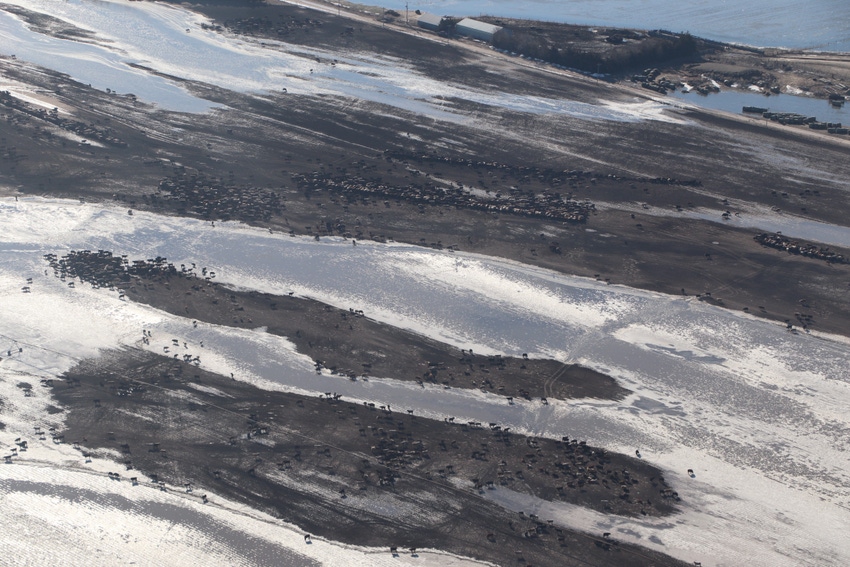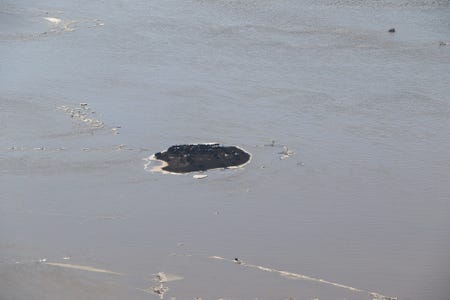Bomb cyclone blasts ag with cold, snow, flooding
Ranchers still battling conditions as they begin to assess loss, damage.

A so-called bomb cyclone hit the U.S. this week, wreaking havoc on many regions, but the areas of the West, High Plains and Midwest were hit the worst. Winter Storm Ulmer brought wind gusts of up to nearly 100 mph and whiteout conditions that led to at least eight locations and four states meeting blizzard criteria.
Weather officials and public officials warned Friday that flooding and cold temperatures would continue to affect areas through the weekend. The National Weather Service even issued a “Cold Advisory for Newborn Livestock” on March 15 for many parts of North Dakota.
Nebraska Gov. Pete Ricketts provided an update on the storm Thursday, telling residents to be safe.
“We’re still going to be impacted by these weather conditions for the next several days, especially when it comes to the flooding. It is something that you still need to have awareness of the situation,” he said.
The Nebraska State Patrol waived weight limits for dairy haulers who were having difficulty moving product to market.
Steve Wellman, director of the Nebraska Department of Agriculture, also spoke Thursday, saying, “Our thoughts and prayers go out to people that are working with animals dealing with snowstorm or flooding. It’s been a challenge. We’ve had some contact with my fellow farmers and ranchers about how they’re getting to work. They’ve had challenges getting to the feedlots, getting to where the animals are.”
It also has been a challenge getting feed delivered, he said.
“Most people that we’ve talked to, they have never dealt with things quite this extreme. So, I think it’s a record-setting time for many of us that have been in agriculture for a long time.” Wellman said.
He noted that assistance is available to ranchers and farmers who need help. “Even when the weather subsides, it’s going to be a long-term process,” he said.
Laura Field, vice president of legislative affairs for the Nebraska Cattlemen’s Assn., said many of the organization’s member were affected by the storm.
“Many of our members have been affected differently, whether it’s flooding or snow or wind," Field said. "Those are our member; those are our friends. They are tired. We’ve gotten a lot of calls saying, ‘We were up for two nights in a row.’”
Field said many producers tried to move cattle to shelter prior to the storm hitting.
“We know the impacts are not going to be felt for a while. We know people are still out in the storm right now,” she said, encouraging producers to reach out for help if necessary.
Jed Lafferty, managing director of life sciences at Planalytics Inc. said snow amounts in the northern and central Plains in recent weeks have been more than twice normal amounts, with snow cover of as much as 2-3 ft. in many parts.
“The toll on livestock operations, farm structures and local municipalities budgets has been particularly high,” he reported. “However, with the arrival of a warmer surge this week, along with very heavy rain, there are more issues to deal with. In a matter of a few short days, the combination of precipitation and melting snow has produced massive and widespread flooding for much of the western Corn Belt region.”
Lafferty said the worst hit was eastern Nebraska, where the Missouri, Platte, Niobrara, Loup, Elkhorn and Little Sioux rivers have all gone over their banks, prompting mandatory evacuations.
In Iowa, the Des Moines and Raccoon rivers have also been reported above flood stage.
Conditions are expected to improve, he said, as drier weather should mean that floodwaters will recede rapidly next week.
About the Author(s)
You May Also Like





